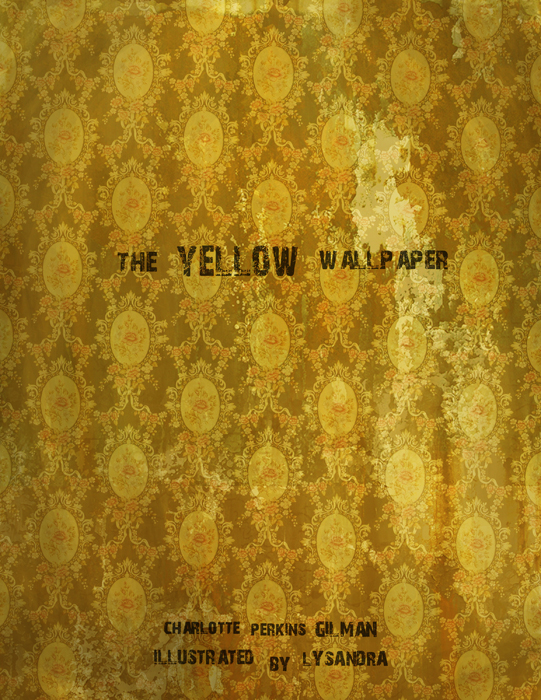The
narrator is a young wife and a new mother, suffering from bouts of anxiety and
unrecognised post partum depression. The narrator knows she is unwell, however
the doctors regard her state as a "temporary
nervous depression". Her physician husband John prescribes the
infamous "rest cure"; which involves isolation and a restriction of
creativity that may stimulate her mind, especially her writing. Nevertheless
this treatment becomes rather significant in her descent into madness.
The
narrator is portrayed as an upper middle class woman, an intelligent figure who
is expressive and imaginative, and a talented story teller. Initially she is
aware of her depressive illness as she states "I cry at nothing and I cry most of the time. Of course
I don't when John is here, or anybody else, but when I am alone."
This is the first insight into her deteriorating condition; yet her treatment
poses an opposite effect, which results in a darker more reclusive character.
The trouble is the narrator knows what would be good to lift her mood and
improve her condition "Personally,
I believe that congenial work, with excitement and change, would do me
good", here it proves that her opinion is constantly disregarded
and has other people other than herself controlling her life. The narrator is
seen as a belonging rather than an individual; and she is accepting this way of
life by conforming to the patriarchal norms of the nineteenth century.
Patriarchal obedience has stripped the narrator of her freedom as she strives
to be the idealistic wife and mother.
Yet
her reasoning and emotions rebel and her only freedom is represented through
her secret diary, here is where she seeks solace due to her inactivity and for
the most part, loneliness. Her diary helps to hide her thoughts from the real
world and live through her creativity in a fantasy world; which is brought on
via natural attention to neutral objects to avoid her growing frustration, and
becomes preoccupied with the yellow
wallpaper.
At
the end of this short story the narrator has became totally fixated on the
woman trapped behind the patterned yellow wallpaper "The outside pattern I mean, and the woman
behind it is as plain as can be"; she recognises that both the
woman and herself are suffering from oppression and imprisonment. In the end
the narrator has lost all sense of reality "I've
got out at last, in spite of you and Jane. And I've pulled off most of the
paper, so you can't put me back!" and is found by her husband
creeping on the floor of her confinement, following the pattern of the
wallpaper. By successfully realising the woman in the wallpaper she’s helped to
liberate herself by choosing
the path of insanity and discarding her earlier beliefs of being an idealistic
wife and mother.
John
John is the narrators physician husband who does not believe anything serious is a matter with his wife, other than as previously stated "a slight hysterical tendency", the narrator clearly loves her husband yet does not believe that in his care she can recover fully because of their unequal relationship. "John is a practical in the extreme. He has no patience with faith, an intense horror of superstition, and he scoffs openly at any talk of the things not to be felt and seen and put down in figures" this portrays his character as a rational man a man of science, which is in stark contrast to his wife's creative persona. The differences in the two are shown through his abilities as a doctor, he disregards her opinion which results her in hiding her feelings. John represents the nineteenth century patriarchal/ chauvinistic man. John is patronising and derogative in manner to his wife by acknowledging her as his "blessed little goose" and "little girl"; little things like not adhering to her wishes, (when the narrator wanted to change rooms) with his dry clinical authority both him and his wife seem unsuited as he is unable to understand his wife’s’ creative mannerism. He is unable to accept her as an equal and it seems when faced with confrontation he fixes himself with an authorative position which shows his paternalistic divide between man (who goes out to work) and woman (who tends to the family and the home) of the age.
John
seems the obvious villain to blame for his wife's mental breakdown; but as a
man of position it would be believed he would try to help his wife rather than
make her condition worse, yet it is his ignorance towards his wife that proves
most harmful. He does not see the suffering, struggling woman on the inside,
their unequal relationship can only add to their troubles of him understanding
her as a wife rather than a patient. By treating her as a case, she is unable to conform to society’s domestic role and John’s
uncertainty helps to destroy her. He does not see that his isolation cure has in
fact pushed her to insanity.
